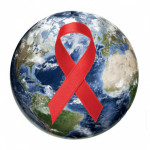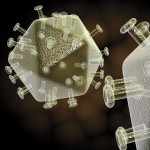An experimental integrase inhibitor being developed by Shionogi Pharmaceuticals and ViiV Healthcare—currently dubbed S/GSK-572—effectively reduces HIV levels in at least some people with HIV resistant to Isentress (raltegravir). These findings were reported in a presentation Monday, July 19, at the International AIDS Conference (IAC), taking place July 18 to 23 in Vienna.
While very early laboratory experiments suggested that the new Shionogi/ViiV integrase inhibitor would not share similar drug-resistance patterns with Isentress, more recent data have suggested otherwise. People with HIV who have become resistant to most of the available antiretroviral (ARV) medications need new treatment options, however, so the companies believed it was important to explore S/GSK-572’s potential against Isentress-resistant virus.
Joseph Eron, MD, from the University of North Carolina in Chapel Hill, and his colleagues set out to determine the efficacy of S/GSK-572 in people who’d developed resistance to Isentress. They enrolled 27 HIV-positive people who had resistance to Isentress and at least two other ARV classes.
This ongoing study has two phases. In the first phase, people take 50 mg of S/GSK-572, once daily for 11 days, without adding any other ARVs. In the second phase, people add other ARVs, depending on the results of drug resistance testing, to make up a complete optimized regimen. People remain on this optimized regimen, plus S/GSK-572, for up to 48 weeks. The first phase has been completed and was reported at the conference. The second phase is ongoing. The primary end point for phase one is achieving a viral load under 400 by day 11, or a drop in virus of at least 0.7 logs.
All of the participants underwent phenotypic and genotypic drug resistance tests at the beginning of the study. Roughly one third of the participants, in Group 1, had more extensive Isentress resistance, defined as having the Q148H/K/R integrase mutation, plus at least one other related integrase mutation. The other two thirds, in Group 2, had only the Q148 mutation, the N155H or the Y143H mutation.
Eron and his colleagues found that people with only moderate Isentress resistance responded quite well to S/GSK-572. All 18 patients in Group 2 achieved the primary endpoint, and the average drop in virus during 11 days was 1.81 logs. Only three of the nine people in Group 1 achieved the primary endpoint, however, indicating that people with more extensive Isentress resistance might not respond as well to the new integrase inhibitor.
Another finding of the study—which will be useful to clinicians should S/GSK-572 ever be approved—is that phenotypic resistance testing before people started treatment strongly predicted who would respond to S/GSK-572 and who would not.
Side effects to S/GSK-572 during the 11-day study period were mostly mild to moderate, with the most common being diarrhea and insomnia. While there were three more serious side effects—one case each of neurosyphilis, loss of consciousness and significant increases in cholesterol—none were related to S/GSK-572.
Advertisement
Advertisement
Advertisement






Comments
Comments